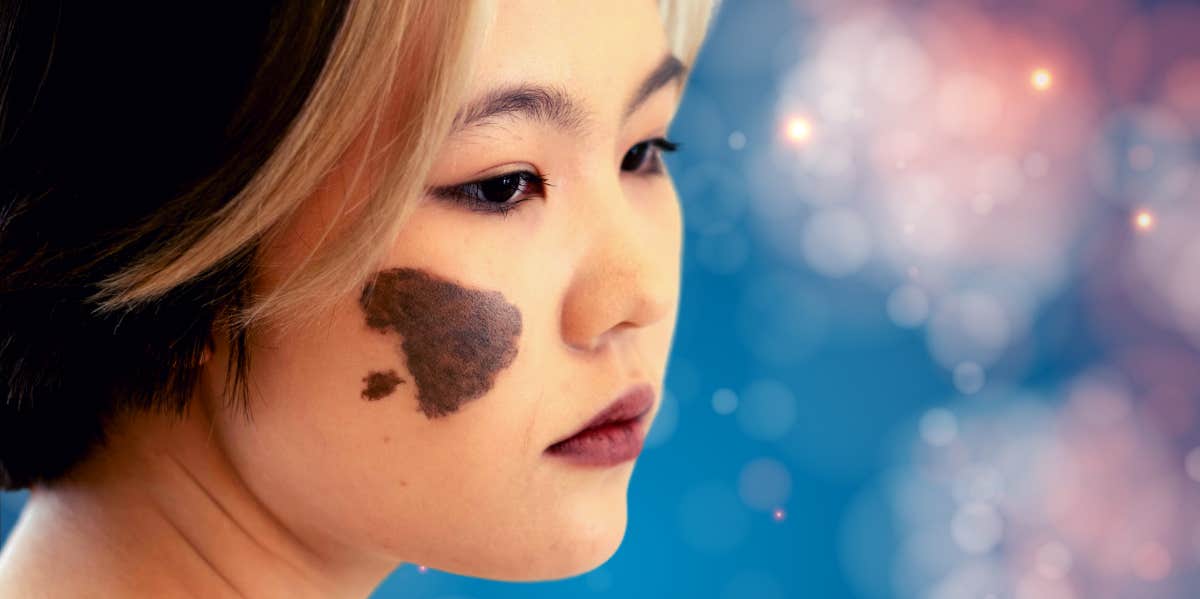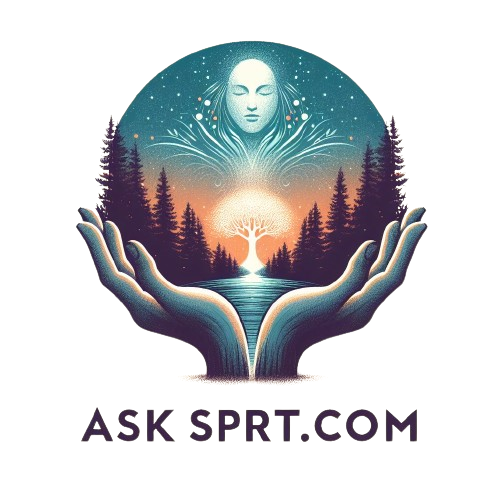The spiritual meaning of Mongolian spots is not well-established. However, they are believed to have cultural significance in Mongolian and East Asian traditions.
These blue or gray birthmarks, often found on the lower back or buttocks of newborns, are thought to represent ancestral connections or spiritual protection. In Mongolian culture, they are sometimes referred to as “the mark of the heavens” and are seen as a sign of strength and vitality.
Despite their spiritual connotations, it’s important to note that Mongolian spots are simply benign birthmarks with no medical implications. While their exact spiritual meaning may vary, they are generally seen as a unique and beautiful part of a person’s identity.

Credit: www.yourtango.com
Mongolian Spot Origins
Mongolian spots, also known as congenital dermal melanocytosis, are birthmarks that appear on infants. These spots have been a subject of fascination due to their unique spiritual meaning and cultural significance. In this section, we will delve into the origins of Mongolian spots and explore their historical context and cultural significance.
Historical Context
The discovery of Mongolian spots dates back to the early 19th century when they were first documented by a German physician, Ernst Johann Conrad Hecker, in 1851. He observed these birthmarks in infants of Mongolian descent, which led to the term “Mongolian spots” being coined. The historical context of these spots is deeply rooted in the cultural and anthropological study of different ethnic groups and their distinctive physical characteristics.
Cultural Significance
Mongolian spots hold significant cultural importance, especially in regions where they are prevalent. In Mongolian and East Asian cultures, these birthmarks are often associated with auspicious meanings and are believed to bring blessings and protection to the individuals who bear them. Furthermore, they are sometimes linked to ancient folklore and spiritual beliefs, adding to their cultural significance.

Credit: trippyspirit.com
Physical Characteristics
Mongolian spots are birthmarks with no spiritual significance. They are blue-gray skin pigmentation common in infants.
Common Appearance
Mongolian spots are a type of birthmark that are commonly seen in infants. These spots are characterized by their bluish-gray color and irregular shape. They are typically found on the lower back, buttocks, and legs of babies, but can also appear on other parts of the body. Mongolian spots are usually harmless and will eventually fade on their own.Anatomical Locations
Mongolian spots are caused by the accumulation of pigment in the skin. They are most commonly found in people with darker skin tones, including those of African, Asian, and Native American descent. The spots are usually located in the dermis layer of the skin, which is the second layer of skin beneath the epidermis. They can range in size from a few millimeters to several centimeters in diameter.In conclusion, the physical characteristics of Mongolian spots include their bluish-gray color and irregular shape. They are most commonly found on the lower back, buttocks, and legs of infants, but can also appear on other parts of the body. Mongolian spots are caused by the accumulation of pigment in the skin and are usually harmless. They are most commonly seen in people with darker skin tones and are located in the dermis layer of the skin.Mythical Associations
Mongolian spots have deep mythical associations in Mongolian culture, symbolizing spiritual significance and the connection to nature and the universe. These birthmarks are believed to hold spiritual meanings and are often associated with good luck and protection in Mongolian folklore.
Mongolian spots are a type of birthmark that is commonly found on newborn babies. While these spots are harmless, they have been associated with spiritual and mythical beliefs in many cultures. In Mongolia, these spots are believed to have a special spiritual meaning and are often associated with mythical beliefs that have been passed down through generations. Let’s take a look at some of the mythical associations of Mongolian spots.Ancestral Connections
One of the most common beliefs surrounding Mongolian spots is that they are a sign of ancestral connections. According to Mongolian folklore, these spots are thought to represent the spirits of ancestors who watch over and protect the child. It is believed that the darker and larger the spot, the stronger the ancestral connection is. Many Mongolian families even go as far as to name their children after their ancestors in order to honor and strengthen this connection.Reincarnation Beliefs
Another common belief in Mongolian culture is the idea of reincarnation. It is believed that when a person dies, their spirit is reborn into a new body. Mongolian spots are often seen as a sign of reincarnation, with the belief that the darker and larger the spot, the more likely it is that the child is a reincarnation of a particular ancestor. Some families even believe that the location of the spot on the body can indicate which ancestor the child is a reincarnation of.In conclusion, Mongolian spots have deep spiritual and mythical associations in Mongolian culture. These beliefs have been passed down through generations and continue to hold significance in many families today. Whether or not you believe in these beliefs, Mongolian spots serve as a unique and fascinating part of Mongolian culture and tradition.Spiritual Interpretations
The Mongolian spot is believed to have spiritual interpretations in some cultures. It is thought to represent a connection to the spiritual realm or ancestral spirits, symbolizing protection and guidance. This unique birthmark carries deep meaning and significance for those who believe in its spiritual connotations.
Mongolian spots are not just physical markings; they hold deep spiritual interpretations that have been passed down through generations. These interpretations offer insight into the spiritual significance of these unique birthmarks. Let’s explore two key aspects: Soul Marks and Karma, and Protection and Healing.Soul Marks And Karma
Mongolian spots are often believed to be soul marks, representing connections to past lives and karmic ties. According to spiritual beliefs, these marks indicate unfinished business from previous incarnations. It is believed that the location and shape of the spot can reveal specific information about the individual’s past life experiences and lessons.In some spiritual traditions, Mongolian spots are seen as reminders of unresolved karmic debts. They serve as a constant reminder to the individual to work through these karmic issues in their current lifetime. By recognizing and addressing these karmic patterns, individuals can strive for personal growth and spiritual evolution.Protection And Healing
Another spiritual interpretation of Mongolian spots is related to protection and healing. These birthmarks are often regarded as symbols of divine protection and spiritual guardianship. It is believed that individuals with Mongolian spots are blessed with an inherent spiritual shield, providing them with strength and resilience in their life’s journey.Furthermore, Mongolian spots are associated with the ability to harness and channel healing energies. It is believed that these marks signify an innate connection to the spiritual realm and the ability to tap into healing energies for oneself and others. Individuals with Mongolian spots may find themselves drawn to healing practices, such as Reiki or energy work, as they have a natural affinity for these modalities.In conclusion, Mongolian spots hold significant spiritual interpretations. They are seen as soul marks, representing past lives and karmic ties. Additionally, these birthmarks symbolize divine protection and the ability to harness healing energies. Embracing the spiritual significance of Mongolian spots can offer individuals a deeper understanding of their life’s purpose and spiritual journey.Global Perspectives
The spiritual significance of Mongolian spots is not limited to a specific region or culture, and its meaning can be interpreted from a global perspective. Both Eastern traditions and Western views offer unique insights into the spiritual significance of Mongolian spots, shedding light on the diverse cultural perceptions of this phenomenon.
Eastern Traditions
In Eastern traditions, Mongolian spots are often associated with auspicious meanings, representing spiritual protection and divine blessings. In various Asian cultures, these birthmarks are believed to symbolize the presence of ancestral spirits and serve as a link to the spiritual realm. The intricate connection between Mongolian spots and Eastern spirituality is deeply rooted in ancient beliefs, fostering a sense of reverence and spiritual interconnectedness.
Western Views
Within Western perspectives, the spiritual significance of Mongolian spots is approached from a more scientific and sociocultural standpoint. While some may view these birthmarks as purely biological phenomena, others perceive them as unique identifiers, embracing the diversity of human existence. Western interpretations of Mongolian spots often emphasize the importance of inclusivity and acceptance, recognizing the beauty of individuality and cultural diversity.

Credit: tucsonspiritualdirection.org
Scientific Versus Spiritual
Mongolian spots are believed to have both medical and spiritual significance. Let’s explore the scientific explanations and the coexistence of spiritual beliefs related to these unique birthmarks.
Medical Explanations
Mongolian spots are benign skin markings caused by melanocytes. They are common in infants and usually fade with age.
Coexistence Of Beliefs
- In Mongolian culture, these spots are seen as a sign of good luck and protection against evil spirits.
- Spiritually, they are believed to represent ties to past lives or ancestral connections.
Personal Stories
Mongolian spot spiritual meaning is a personal story that explores the traditional beliefs of Mongolian people regarding birthmarks. Passed down from generation to generation, these stories are a fascinating insight into the spiritual significance of these unique markings.
Family Heirlooms
Generations pass down Mongolian Spot spiritual meanings through cherished family heirlooms.
Individual Journeys
Each person embarks on their unique journey to understand and embrace Mongolian Spot spiritual significance.
Embracing The Mark
In Mongolian culture, the spiritual meaning of Mongolian spots goes beyond physical appearance.
Self-acceptance
Embracing these marks fosters self-acceptance and inner peace.
Celebrating Uniqueness
It symbolizes celebrating uniqueness and diversity in all forms.
Frequently Asked Questions
What Is The Meaning Behind Mongolian Spots?
Mongolian spots are bluish-gray birthmarks commonly found on the lower back and buttocks of infants. They are caused by pigment-producing cells that are deeper in the skin than normal. These spots are harmless and usually fade away as the child grows older.
What Is The Mongolian Birthmark Folklore?
Mongolian birthmark folklore is a belief that birthmarks indicate past life wounds or memories. It is a traditional cultural belief in Mongolia.
Do Caucasians Have Mongolian Spots?
Yes, Caucasians can have Mongolian spots. They are common in infants, regardless of ethnicity.
What Do Birthmarks Mean Spiritually?
Birthmarks hold spiritual significance and are believed to be connected to past lives or karmic patterns. They are considered unique symbols that can carry messages or lessons from the spiritual realm. These marks are often seen as reminders of unfinished business or lessons to be learned in this lifetime.
Conclusion
Understanding the spiritual meaning behind Mongolian spots can provide a deeper appreciation for their presence. These unique birthmarks, often found on infants, hold significance in different cultures, symbolizing various aspects like ancestral connections or spiritual protection. By recognizing the cultural and spiritual significance of Mongolian spots, we can foster a greater respect and understanding for the diversity of human experiences.
Let us embrace and celebrate these markings as a part of our shared human tapestry.



